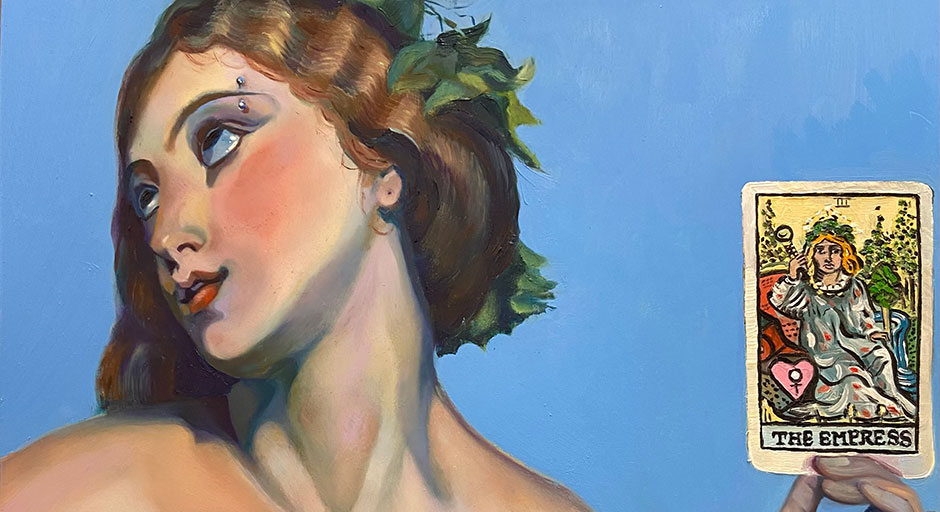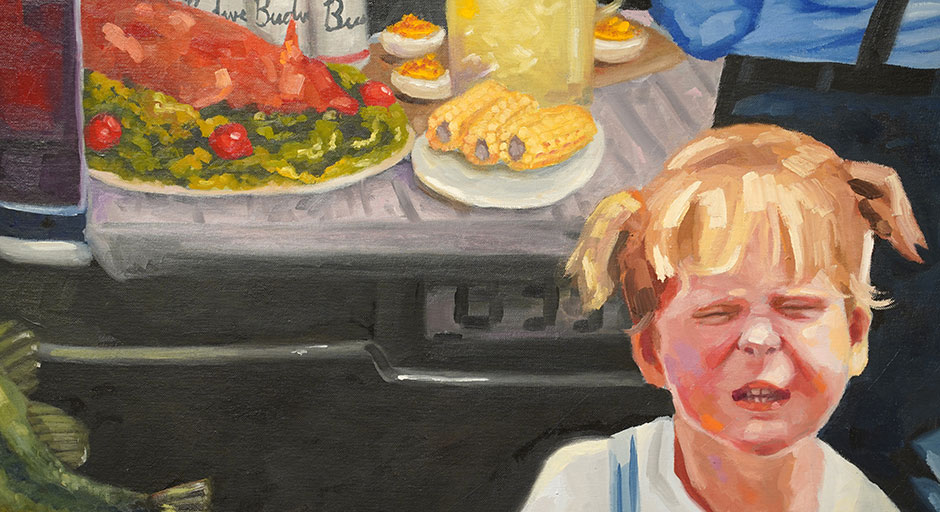Painting
This program introduces students to the many mediums of painting, focusing on a strong foundation in color theory and color sighting.
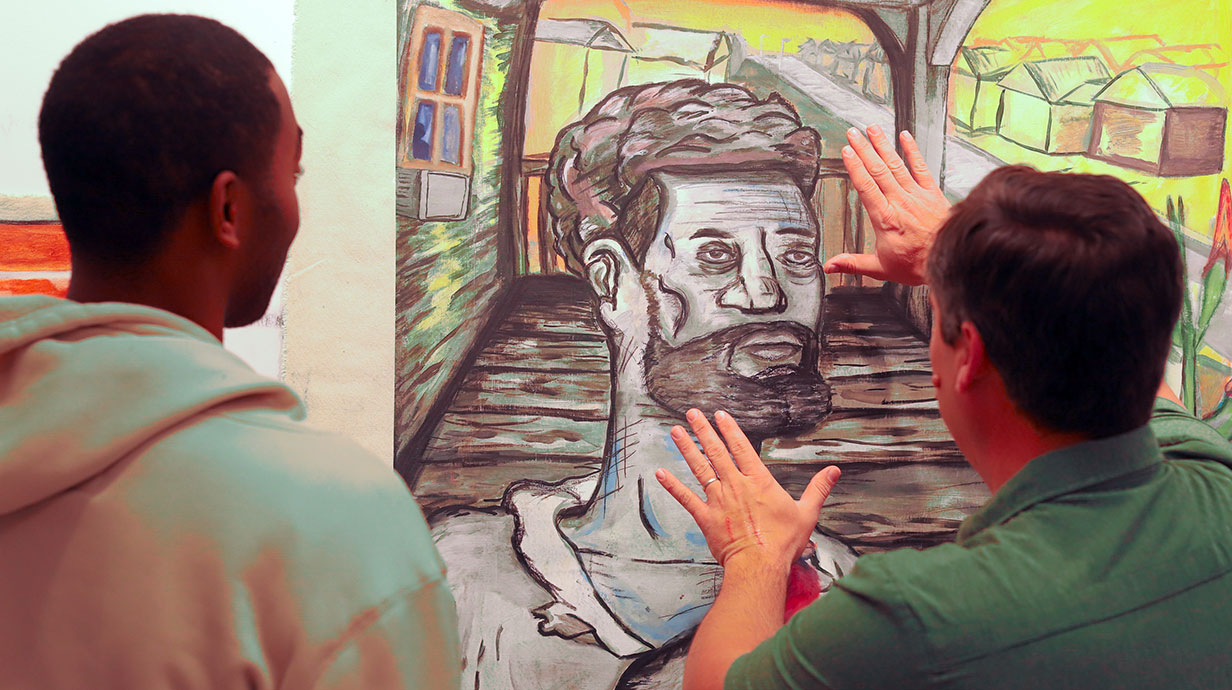
“The Art Department feeds into the individual rather than one overarching idea."
Ramsay Stayer
BFA in Art (Painting)
Creatively Express Ideas & Emotions in a Two-Dimensional Visual Language
Students learn to work in diverse styles of representational, imaginative, and abstract painting. Light, color, texture, and tone are the tools they use to create a broad array of two-dimensional art. Whether they are working in tempera, fresco, oil, watercolor, ink, or other visual media, they create unique visual images that are expressions of an adept and inspired studio practice.
Our Painting Community
Check out the work our painting students are producing each year.
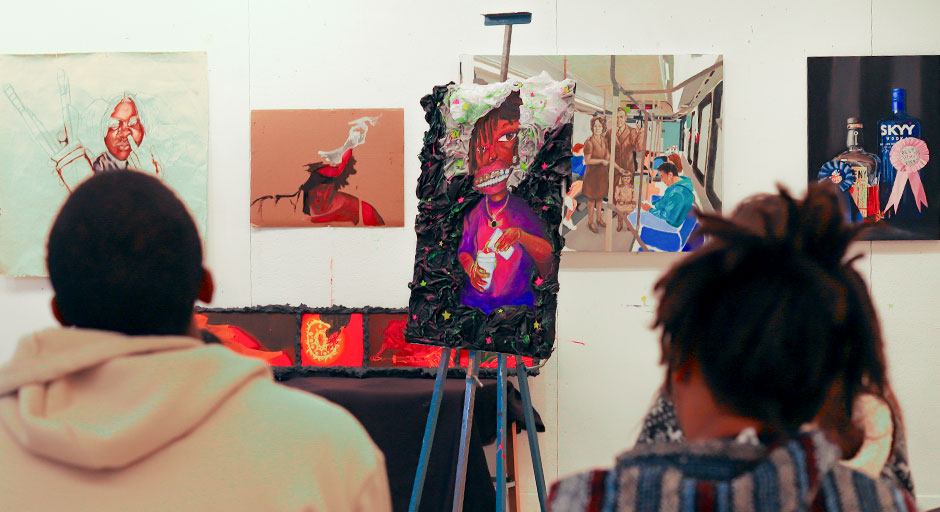
Advanced Painting Critique

Watercolor Class Painting St. Peter's Pumpkins
Student Painting in Intermediate Painting Class
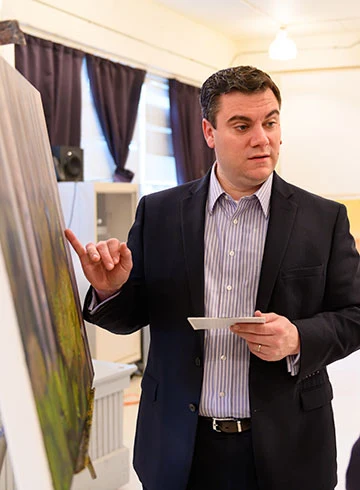
Welcome From Our Studio Head
Hello, and welcome to the Painting Studio! My name is Philip Jackson, and I am the Head of Painting at Ole Miss. I found my passion for painting through the endless possibilities of expression it offers, and I know you will too. Our studio is a place where creativity and collaboration come together, offering you the chance to explore various painting techniques and styles. Whether you're working with oils, acrylics, or experimenting with mixed media, you'll find the tools and space to bring your ideas to life. If you have any questions or need guidance, feel free to reach out! I’m excited to see the unique pieces you’ll create and share in the joy of painting with you.
Philip Jackson
Professor of Art
Three Different Degree Paths
The Bachelor of Arts (BA) degree has a deeper and wider general education foundation than the Bachelor of Fine Arts (BFA) degree. The BA degree provides flexibility for combining the study of art with a different field of study as a required minor. BFA students can use their art electives to focus on the studio area of their choice, such as painting. Graduate students have the same choice when earning the Master of Fine Arts (MFA) degree.
UG
Earn a flexible B.A. in Art, explore diverse media, and pair it with another field for a well-rounded creative education.
- Oxford
UG
Develop a professional portfolio while deepening technical skills and honing your artistic voice.
- Oxford
GRAD
Join an outstanding cohort of students training to excel in creative production while working closely with award-winning artists.
- Oxford
Meet the Majors
See what currents students have to say about the department.

Nicolette Boyd
Why did you choose to attend UM?
See Nicolette’s Answer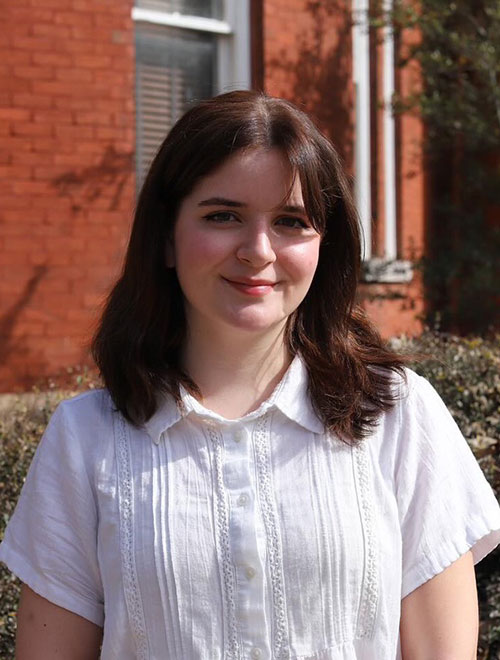
Ann Grigsby
- Student Activities Association
What has been one of your most memorable or enjoyable moments at UM?
See Ann’s Answer
Emmaline Landes
- Greek Life
What attracted you to the Department of Art & Art History?
See Emmaline’s Answer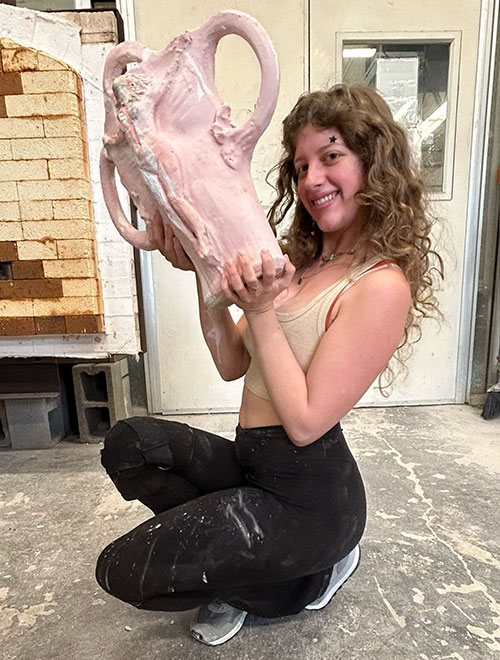
Ruth Hogue
- Service and Community Engagement
Which artists do you look to for inspiration?
See Ruth’s Answer
Claire Baskin
Do you have any advice for incoming art students?
See Claire’s AnswerFeatured Courses
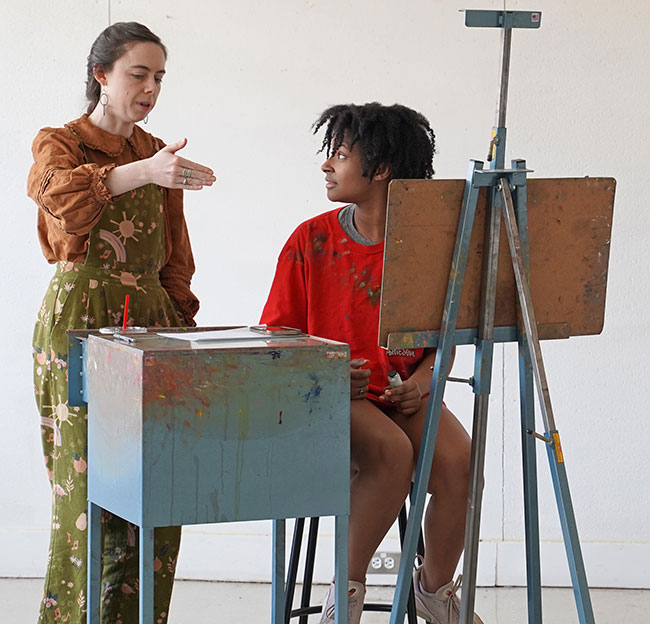
Art 321: Beginning Painting
Introduction to acrylic and oil painting techniques with highly structured assignments, including working from observation.
Art 322: Intermediate Painting
Expansion of techniques learned in Beginning Painting; use of oil paint and focus on developing a concept, working in a cohesive series, and producing a substantial number of paintings.

Art 323: Plein Air: Painting the Landscape
Outdoor oil painting of the landscape; use of color palettes associated with the subject and develop an individual painting approach.
Meet The Faculty
Philip Jackson
- Professor of Art
Brooke Alexander
- Instructional Assistant Professor of Art, Drawing and Painting
Kariann Fuqua
- Instructional Associate Professor of Art, Foundations & Museum Studies
Our Painting Facilities
A versatile space where students have access to state-of-the-art resources for every step of the painting process.
The main teaching rooms (Meek 216 & 218) are designated for teaching of Beginning and Intermediate Painting. Items used in the space include easels, taborets, storage cabinets for still life props, a locking cabinet for hazardous materials, collection receptacles for liquid and solid hazardous waste, an air spray booth, a sink for cleanup, an eyewash station, a tool storage box, and student storage shelves (36 spaces). Items used in the main teaching rooms include easels, taborets, storage cabinets for still life props, a locking cabinet for hazardous materials, collection receptacles for liquid and solid hazardous waste, an air spray booth, a sink for cleanup, an eyewash station, a tool storage box, and 36 student storage shelves.
The advanced undergraduate painting room area (Meek 220) is used by 7 to 11 students over the course of a semester. Furnishings include a locking hazardous material cabinet, a cleanup sink, eyewash, storage cabinets for props and supplies, easels, taborets, and a collection receptacle for solid hazardous waste material.
Each graduate painting studio (Meek 207, 211, 213, & 215) is provided with storage shelves, easels, taborets, and a window exhaust fan.
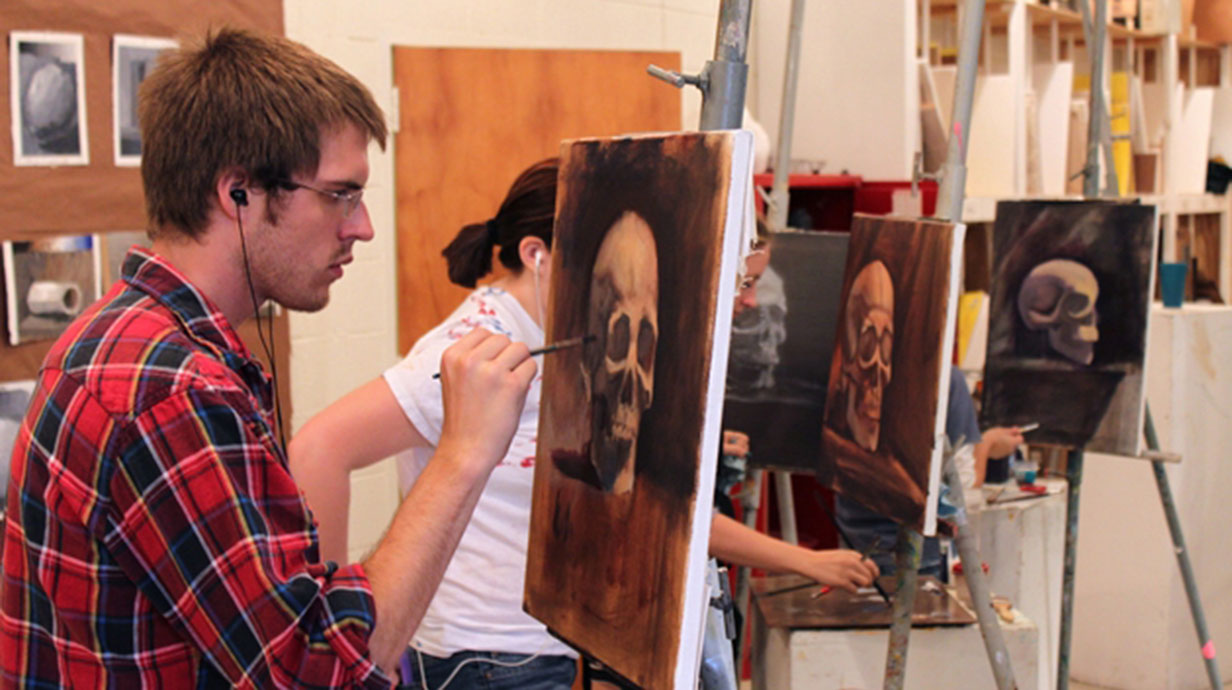
Main Teaching Room
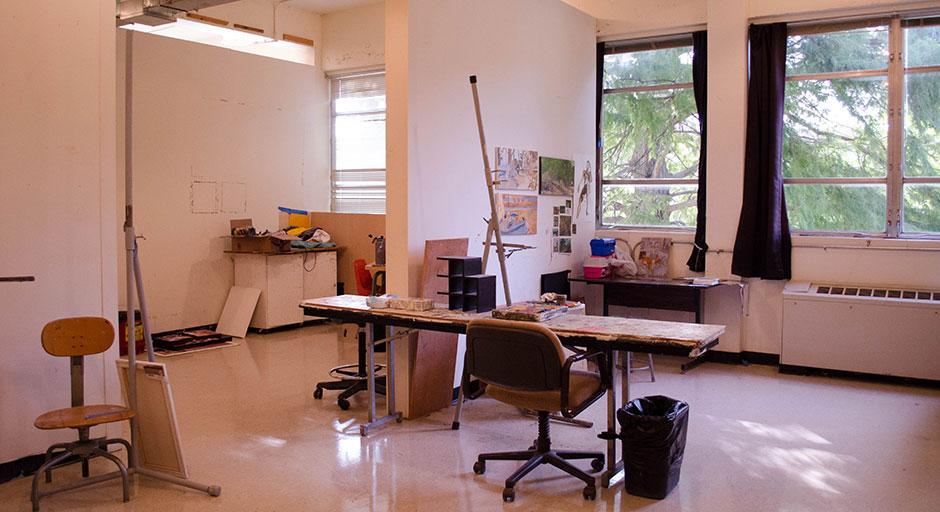
Advanced Painting Studio
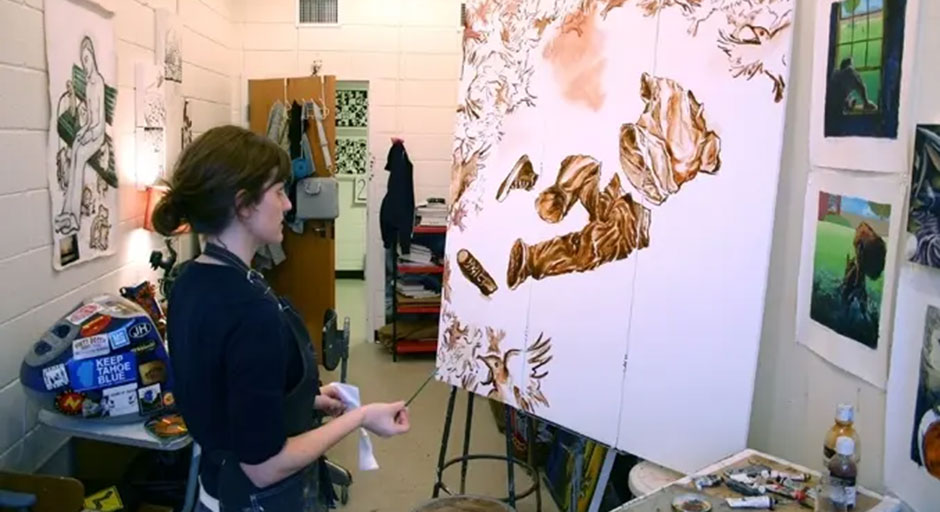
Graduate Studio
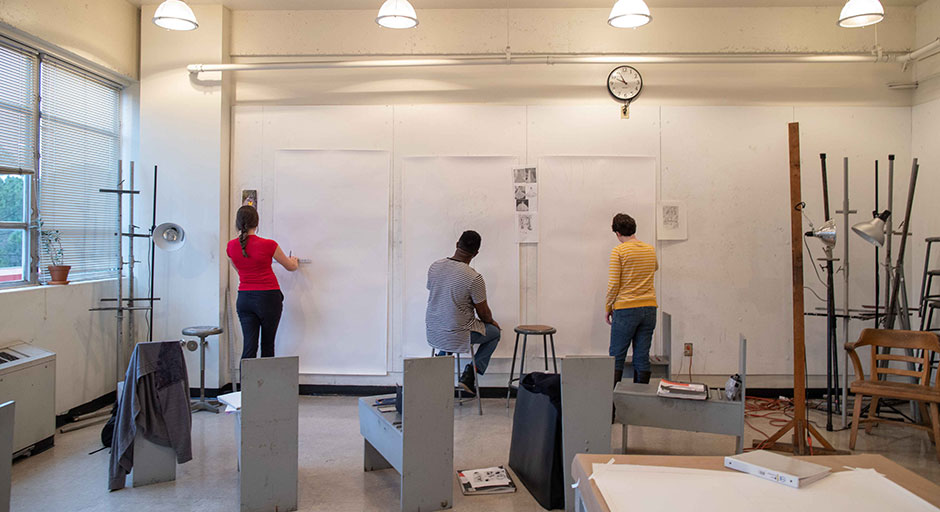
Main Teaching Room
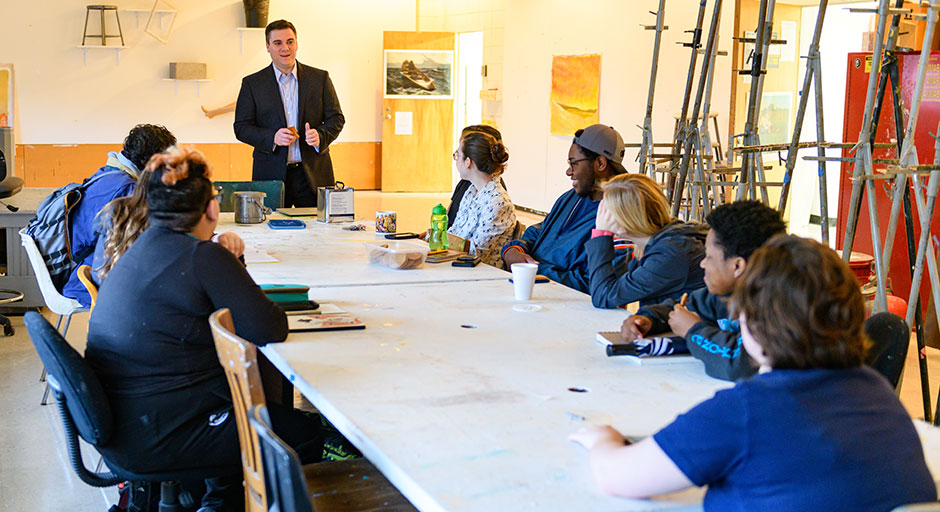
Beyond The Classroom
Learning art is more than what’s learned in the traditional studio courses. Our courses are complemented with demonstrations, lectures, and critiques from faculty and visiting artists. Students can interact with visiting artists, volunteer with the UM Museum, intern with a relevant site, or study abroad.
Art Talks is visiting artist program that creates access to artists in person and via webcam, and helps students and faculty to keep pace with contemporary artistic practice and emerging technology used in cultural production today. Students also expand their professional networks. The list of visiting painters includes:
- John Alexander, Professional Artist
- Jere Allen, Professional Artist
- Gary Baseman, Professional Artist
- Valerie Jaudon, Professor of Art, Hunter College, NYC
- David Jewell, Professional Artist
- Joe Morzuch, Faculty, Mississippi State University
- Laura Mullen, Senior Artroom Practitioner at Royal Cornhill Hospital and Royal Aberdeen Children’s Hospital
- Yvonne Petkus, Professional Artist
- Brian Rego, Professional Artist
- Michael Williams, Professional Artist
Our museum has recently in the past years have been named to EDsmart’s list of “51 Most Astounding University Museums”, with a recent ranking of 17—one spot ahead of Princeton University. Many art students intern or volunteer with the UM Museum where they might work with art education programs or curate an exhibit.
In the museum, you can study the David M. Robinson Collection of Greek and Roman Antiquities, one of the finest collections in the United States. Covering the 1000-year period from 800 B.C. to around A.D. 300, the collection contains Greek and Roman sculpture, Greek decorated pottery, inscriptions, architectural fragments, inscribed Sumerian clay tablets, small artifacts in terrace and bronze, and Roman copies of Greek art works.
Art history majors have exciting opportunities to experience the art and architecture abroad. They can arrange their own study abroad  experience through the Office of Study Abroad. Or, they can travel with UM faculty.
experience through the Office of Study Abroad. Or, they can travel with UM faculty.
One possibility is the formal course titled Art on Location, where UM faculty can take a course of students to different locations around the US and abroad. For example, in the 2-week Winter Intersession in the first two weeks of January 2019, art historian Dr. Louise Arrizoli teamed up with a French professor to offer a study of art in Paris, France.
Meet Our Alumni
See some examples of where a painting degree can take you.
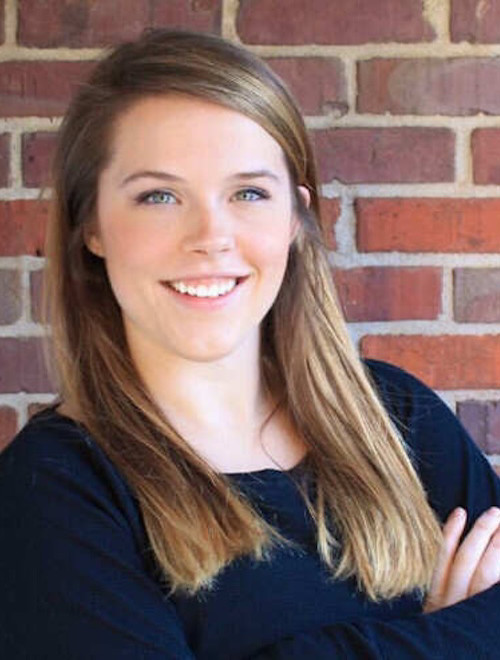
Mary Catherine Davis
Why pursue art?
See Mary Catherine’s Answer
